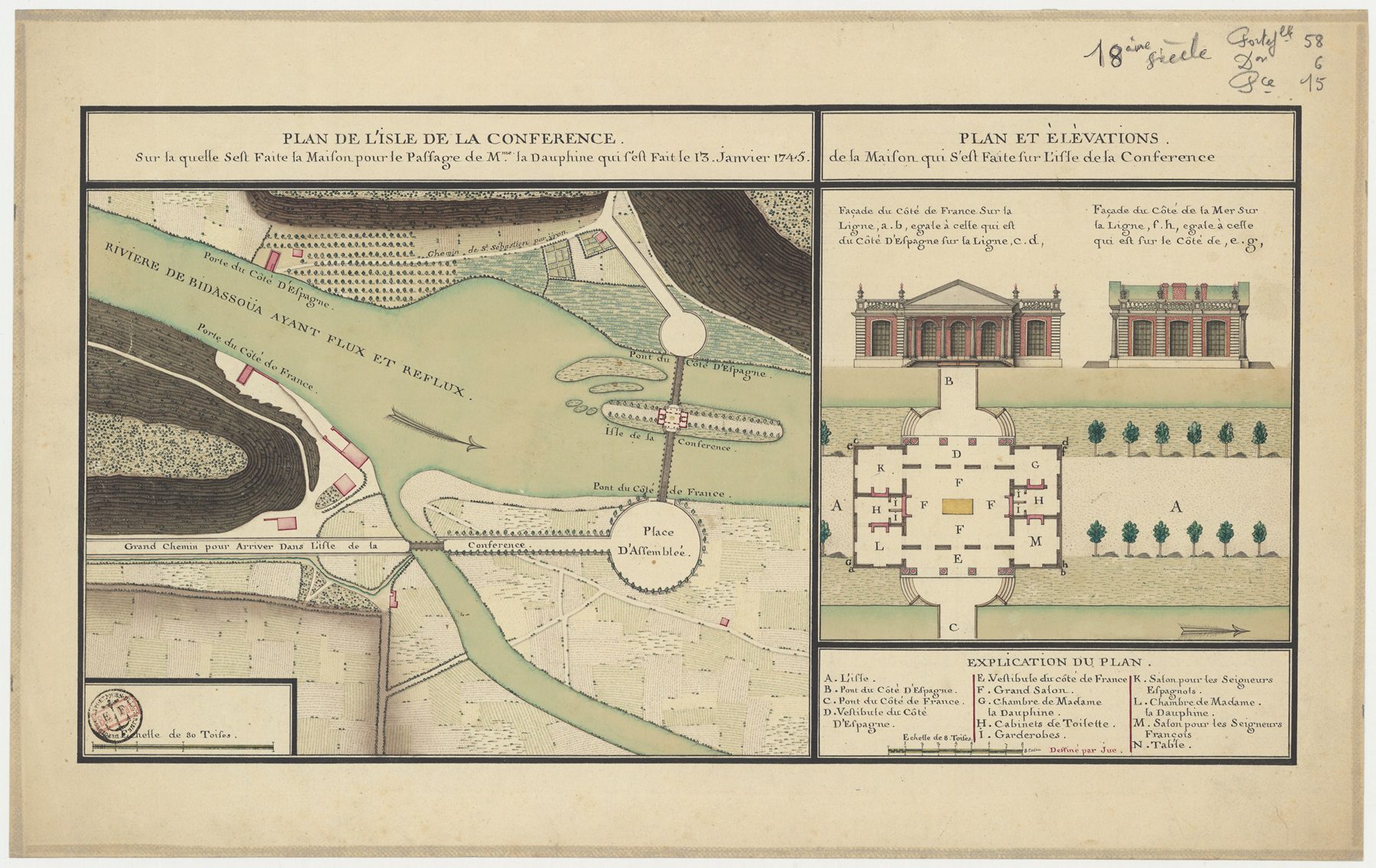Professor’s Research Reconstructs Ephemeral Stages of 18th-century French Diplomacy

The Journal of the Society of Architectural Historians (JSAH), the leading English-language journal on the history of the built environment, has published an article by Assistant Professor of Architectural History Matthew Gin. “Staging Sovereignty: Ephemeral Architecture and the Entry of Maria Teresa Rafaela into France, 1745” appears in Volume 83, Issue 1, the March 2024 issue of JSAH.
“Staging Sovereignty” is Gin’s most recent publication in his ongoing research on the ephemeral architecture built in France for royal festivals and diplomatic ceremonies. This particular article reconstructs the remise of Maria Teresa Rafaela, a ritual held in 1745 that marked when the Spanish princess left her homeland and became the bride of Prince Louis-Ferdinand of France, the son of King Louis XV. The two-and-a-half-hour ceremony took place on the Isle of Pheasants, a tiny island in the midst of the Bidasoa River along the Spanish-French border. Gin highlights how temporary structures, like bridges and an elaborate pavilion, played an important role in the ceremony.
“It became an amazing demonstration of the architectural underpinnings of diplomacy,” said Gin. “A space where political power was unfolding.”

Attributed to Jue, Plan of the Isle de la Conférence on which was built the structure for the passage of Madame la Dauphine on January 13, 1745, 1745. (Bibliothèque nationale de France).
“Staging Sovereignty,” which in an earlier version won a 2021 Society for Court Studies Essay Prize, is part of a larger body of research that formed Gin’s dissertation and will become his first book, Paper Monuments: The Politics of Ephemeral Festival Architecture in Enlightenment France.
Gin first became interested in 18th-century France as an undergraduate student majoring in art history and Baroque flute at Oberlin College, where he was “completely enamored with French music and culture” and fascinated by “the relationship between performance and space,” he said. But his expertise in ephemeral architecture is actually the result of a numerical error.
As a graduate student at Harvard University, Gin went to the rare books library to request a book about French Baroque hedge mazes, but accidentally entered the wrong call number. When the librarian rolled out a cart with a gigantic book about a royal wedding in Paris, he felt obliged to look at it. Opening the massive cover, he discovered “an incredible series of images” of the temporary architecture built for the festivities, he said. “My mind was exploding in that moment, seeing all of that material. I was hooked.”
Years of research in state diplomatic archives in France have followed, and this summer Gin will spend this summer in Paris working on the manuscript.
While Gin’s focus is on the 1700s, French ephemeral architecture is not just a thing of the past, he said. As Paris prepares for the 2024 Summer Olympics, the city is once again becoming “a space of creativity and invention for a whole variety of artists and designers,” and visitors to the Olympic games will encounter a wide range of temporary monuments and venues.
Top image: Matthew Gin researching ephemeral festival architecture at the Canadian Centre for Architecture.